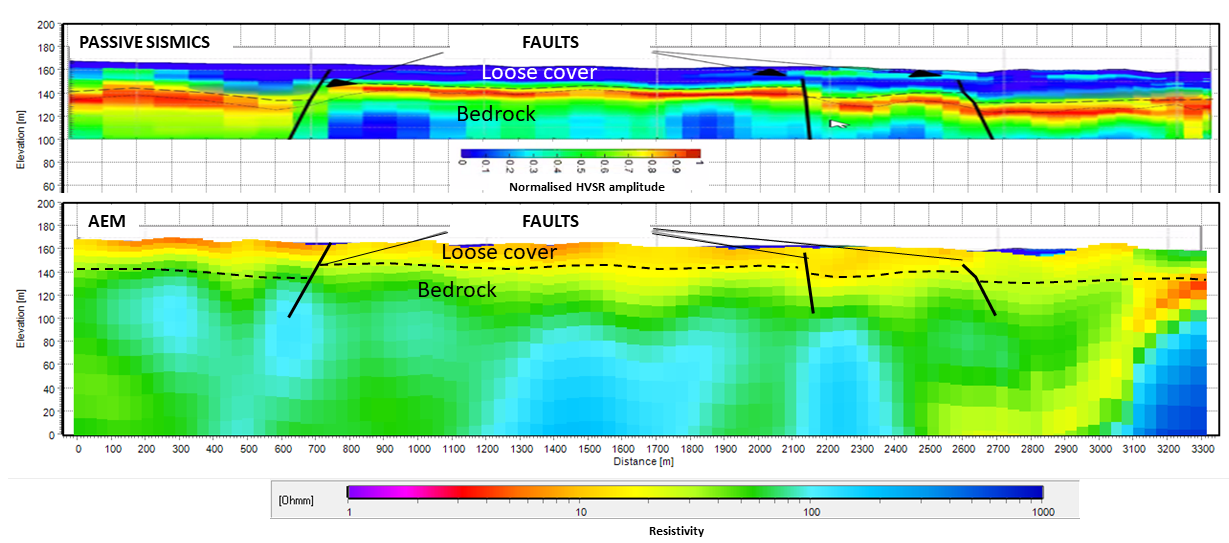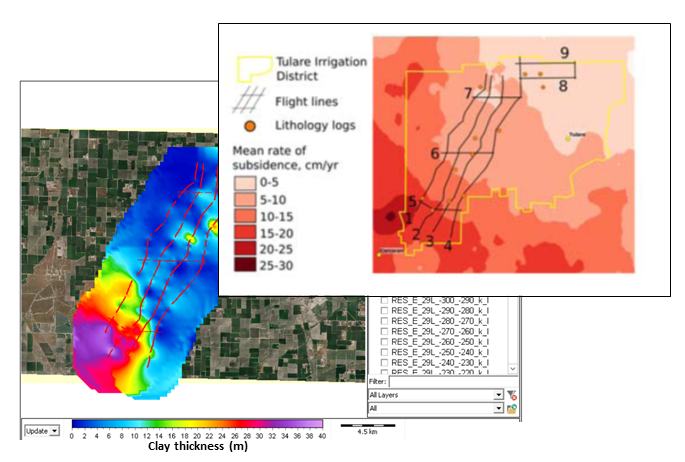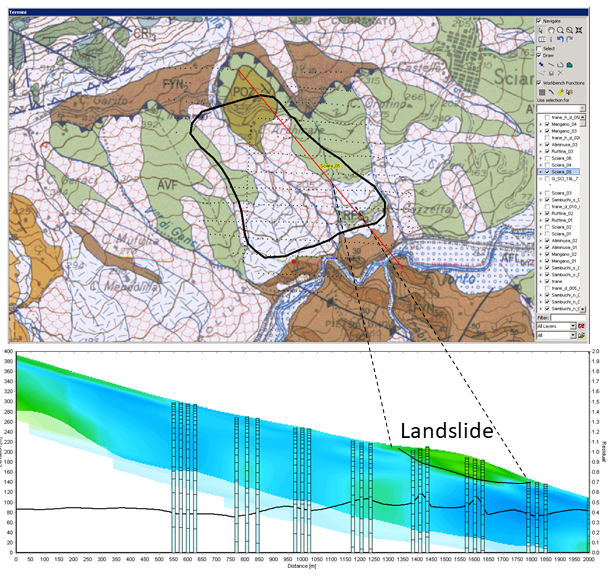AEM is becoming ever more useful in solving geotechnical problems, ranging from infrastructures planning to landslides remediation and subsidence phenomena.
The high performance provided by the NRG Xcite system allows to extract detailed and accurate information within the shallower layers that are usually more involved in geotechnical projects. This outcome is however achievable only if the acquisition of good quality data is followed by an advanced data processing.
For geotechnical applications is crucial to exploit any available info, coming from boreholes, outcrops and other geophysical methods. This means that the modelling needs to be structured as an iterative process, by trying different strategies and approaches.
We can deliver different resistivity modelling, each of those can be more or less adequate for a particular task:
- smooth
- blocky
- sharp
The possibility to cover large areas can translate to an efficient analysis of wide phenomenon, like subsidence, in short time, but with impressive detail.
Landslide study represents another challenging application of AEM: in case of sufficient resistivity contrast, it can provide helpful info for the remedation planning.
Strenghts of AEM applied to Geotechnics are:
- Good reliability of resistivity modelling of shallow structures
- Fast data acquisition and processing/modelling
- Coverage of large and long portions of land
- Non-invasive feature
- Good results also in proximity of urban areas
The most relevant applications of AEM for Hydrogeology are:
- Groundwater mapping
- Seawater intrusion
- Pollution detection
- Vulnerability assessment of aquifers
- Groundwater quality estimation



